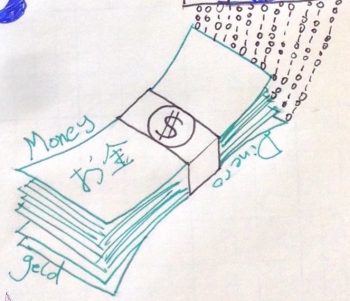
The goal of any personal finance journey is to transition from fragility to security, then to sustainability, and finally to legacy. Focusing on adding value to others and making the world a better place is the key to increasing impact and income.
Below are my “Personal Financial Ninja” belt levels. I’ve also added some other “guru’s” levels below. There are affiliate links towards the bottom.
White Belt: Use a budget, spend less than you make, stop acquiring new debt, give/donate each month. (Begin attacking debt and manage spending! It typically takes about 3 months to get the hang of budgeting and its worth it!)
Yellow Belt: Get out of debt! (non-Mortgage), 3 to 6 month emergency fund.* No credit cards.
*Emergency Fund = Money set aside, equivalent to a certain number of months worth of expenses, only to be used in an “emergency”, typically stored in a savings account.
Orange Belt: 15% of household income into retirement. (Time to focus on Mortgage/Paying for a house. This will eliminate/maintain housing costs and allow focus on investing.)
Priority: 1. Anything matching (workplace 401k, etc.) 2. Roth 3. Traditional/Other (Once you’re at 10-15% of income going into retirement, it’s up to you to decide how much to put into non-retirement.)
Red Belt: Cost of Living Ratio* >=2.0 (sustained), completely Debt Free! (including mortgage).
*Cost of Living Ratio (C.O.L.R) = Net monthly income divided by monthly living expenses. (This is an indicator of how well you’re living below your means.)
Purple Belt: Giving (donating) >= 10% of net income, C.O.L.R. >= 4.0 (sustained), Spend-Invest ratio* >1 (at least $1 dollar invested for every $1 spent).
*Spend Invest Ratio (S.I. Ratio) = The amount of money invested per dollar spent (investment dollars divided by spending dollars).
Black Belt: Pinnacle Point*. Also known as early retirement, or retirement from mandatory work. Time to focus on your legacy, and giving/donating.
*Pinnacle Point (P.P.) = the point where non-retirement earnings >= living expenses
Other Personal Finance Levels:
Below are the Dave Ramsey “Baby Steps“:
Baby Step 1: Save $1,000 for Your Starter Emergency Fund
Baby Step 2: Pay Off All Debt (Except the House) Using the Debt Snowball
Baby Step 3: Save 3–6 Months of Expenses in a Fully Funded Emergency Fund
Baby Step 4: Invest 15% of Your Household Income in Retirement
Baby Step 5: Save for Your Children’s College Fund
Baby Step 6: Pay Off Your Home Early
Baby Step 7: Build Wealth and Give
Seven Levels of Financial Freedom from Grant Sabatier
The following are from the book “Financial Freedom” by Grant Sabatier of Millenial Money. (affiliate link)
- Clarity – when you figure out where you are and where you want to go
- Self-Sufficiency – when you earn enough money to cover your expenses on your own
- Breathing Room – when you escape living paycheck to paycheck
- Stability – when you have six months of expenses saved up and no bad debt (like credit cards)
- Flexibility – when you have at least two years of expenses invested
- Financial Independence – when you can live off the income generated by your investments forever so work becomes optional
- Abundant Wealth – when you have more money than you’ll ever need
You may also like: